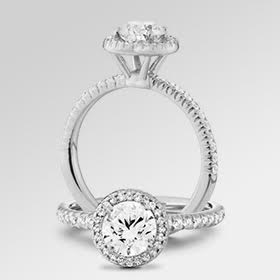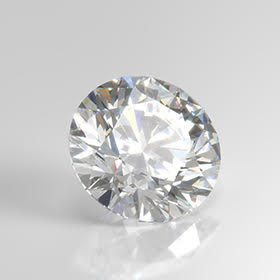What are genuine diamonds?
You might be interested in determining whether a diamond is genuine when diamond shopping. How can you tell whether your gemstone is a real diamond or an imitation diamond? The solution is much easier than it appears!

A "fake" diamond doesn’t genuinely exist. Every diamond is “real” or authentic. This applies to both naturally occurring and lab grown diamonds. Otherwise known as an imitation, a false diamond is a mimicked diamond. Therefore, regardless of where they come from, all diamonds are genuine.
The crystalline form of pure carbon that makes up real diamonds. They are the earth’s toughest material. Diamonds produced in laboratories or by mining are genuine carbon crystals that are real diamonds. No other substance can match only genuine diamonds' unique refractive index. They also possess exceptional chemical and optical qualities unparalleled in other materials.
Other fake diamonds besides cubic zirconia
Anything that isn’t a genuine diamond is considered false or imitated. Fake diamonds may appear to be diamonds at first glance, but they are manufactured from something else.
Genuine diamonds are harder than fake diamonds. A true diamond will have a distinct refractive index than a fake diamond, which measures how light is refracted to the eye. They could be composed of glass, white sapphire, moissanite, cubic zirconia, or other minerals. According to FTC regulations, “lab-grown diamonds” must be clearly labeled, and “diamonds” from the ground must be referred to as such. A laboratory-grown diamond is nevertheless a true diamond, albeit having a slightly different name.
Many jewelry businesses have developed stones that mimic genuine diamonds over the years using flimsier materials. These are frequently less expensive than genuine diamonds. However, they lack the chemical consistency of current diamonds.
A synthetic diamond: Is it real or fake?
Some diamonds and other stones may also be referred to as “synthetic” in a jewelry store. However, despite how similar they may seem, the terms “synthetic” and “simulated” are not the same.
https://www.youtube.com/watch?v=cjy3TsWSTgY
The chemical characteristics of every synthetic gemstone are identical to those of its natural counterpart. For instance, although having exactly the same qualities as actual diamonds, lab-grown diamonds are synthetic. The same holds true for lab-created sapphires and other priceless lab-created stones.
White topaz and cubic zirconia are two examples of simulated gemstones that resemble real but differ in their chemical compositions. Any substance may be used to create these stones. Unfortunately, most fake gemstones are worth little to nothing in the market.
However, lab-created diamonds share the same molecular characteristics as real diamonds. The only difference between natural and lab-grown diamond is that natural diamond is mined while lab-grown diamond is formed in laboratories. As a result, lab-grown diamonds' form, color, and shine can be identical to those of genuine diamonds, with the added bonus of being up to 40% less expensive.
How to Determine if a Diamond Is Real?
Only some imitation diamonds are easy to spot. For instance, it could be challenging to distinguish between white sapphire and a real diamond. However, a competent jeweler can distinguish between genuine and counterfeit diamonds without using a magnifying glass or the naked eye. Likewise, most consumers can distinguish between a genuine diamond and an imitation by knowing how to do so.
Occasionally, a magnifying glass or a diamond tester can be used to determine a diamond’s authenticity rapidly. Whenever you have any questions, ensure that your stone is identified as a real diamond without qualifying brands in the name and certificate. Because they are both real, lab-grown and natural diamonds will pass authenticity tests. You will need specialized equipment to determine if a diamond was mined or created in a lab. Fortunately, fake diamonds are considerably easier to recognize.










